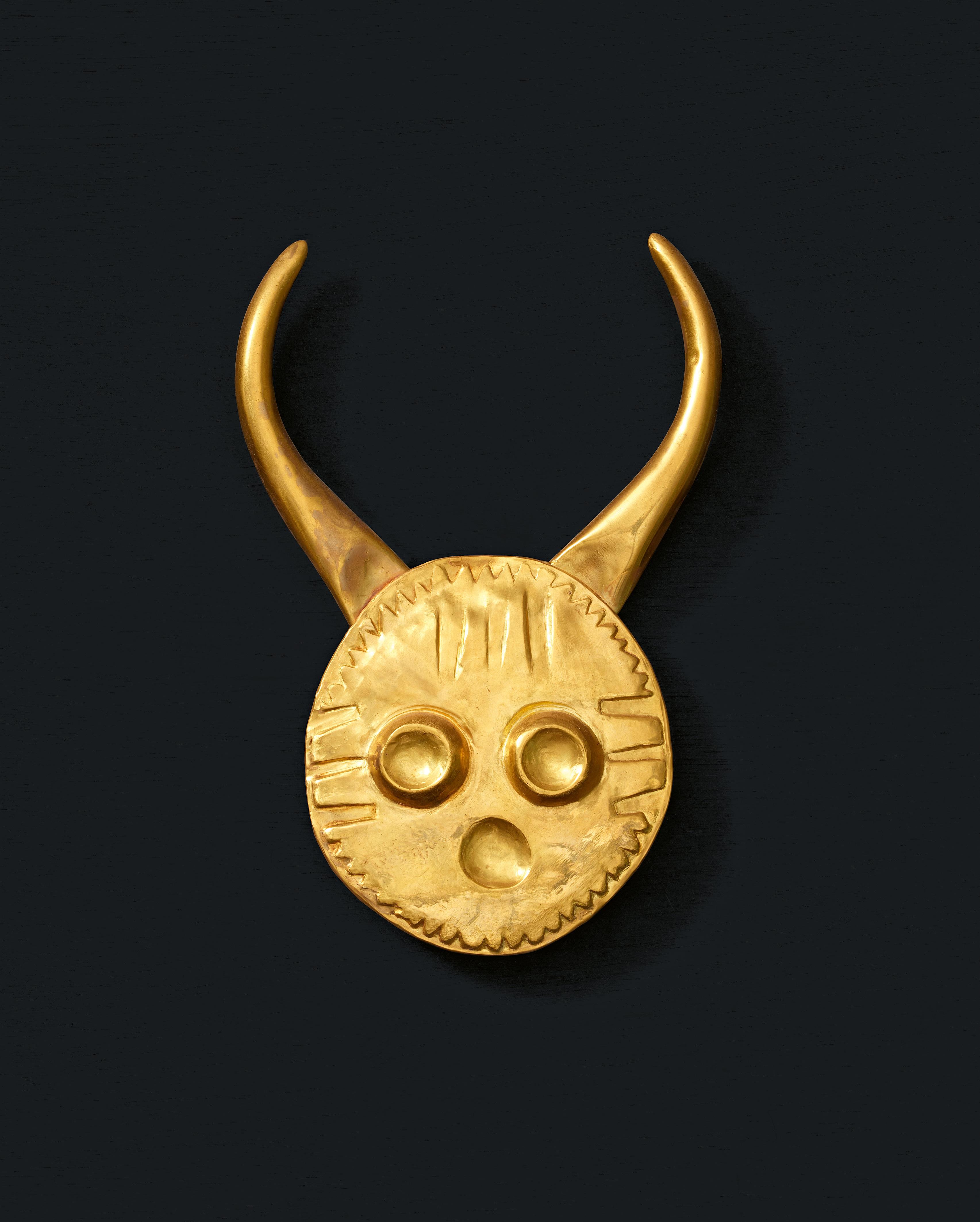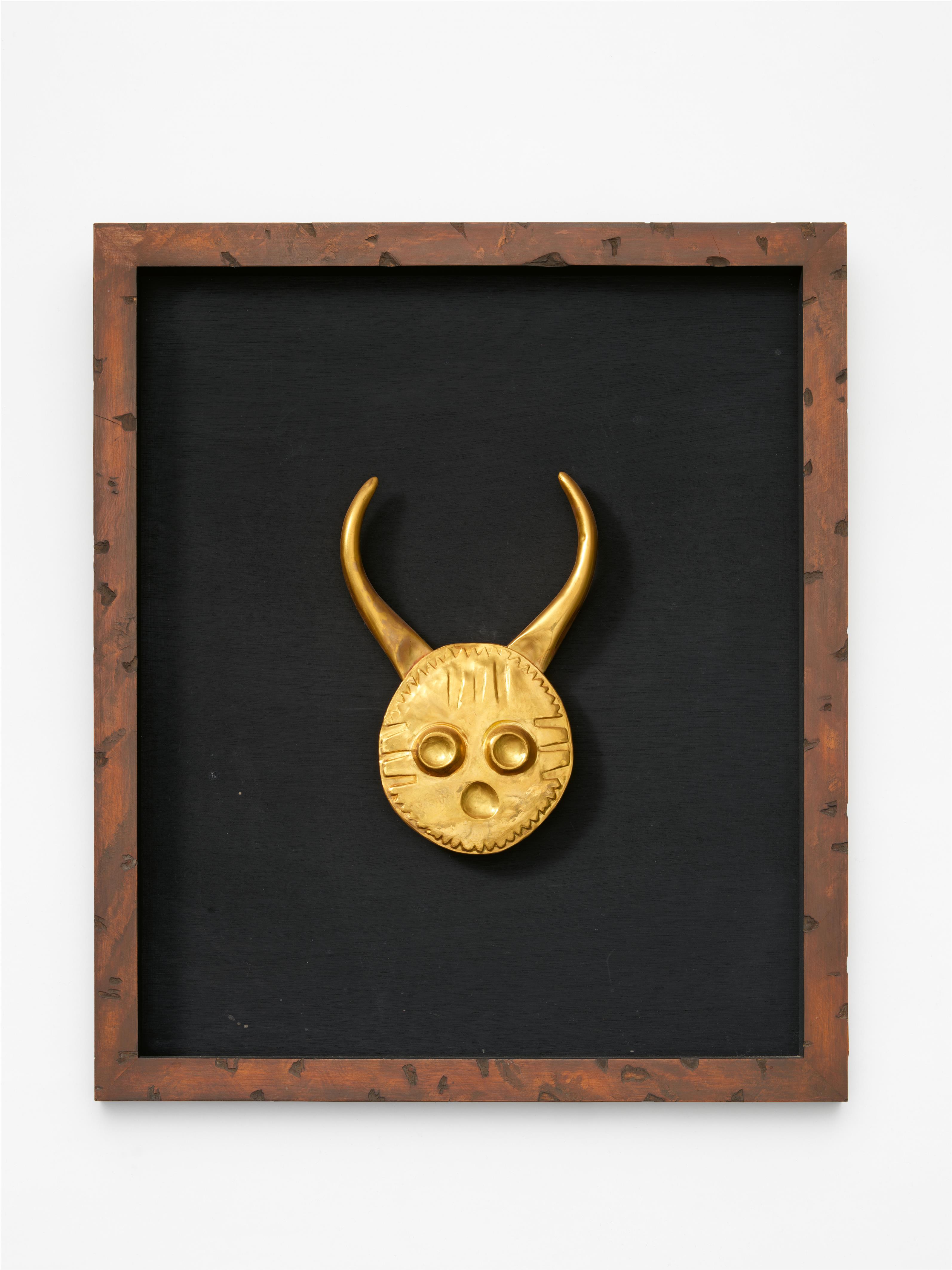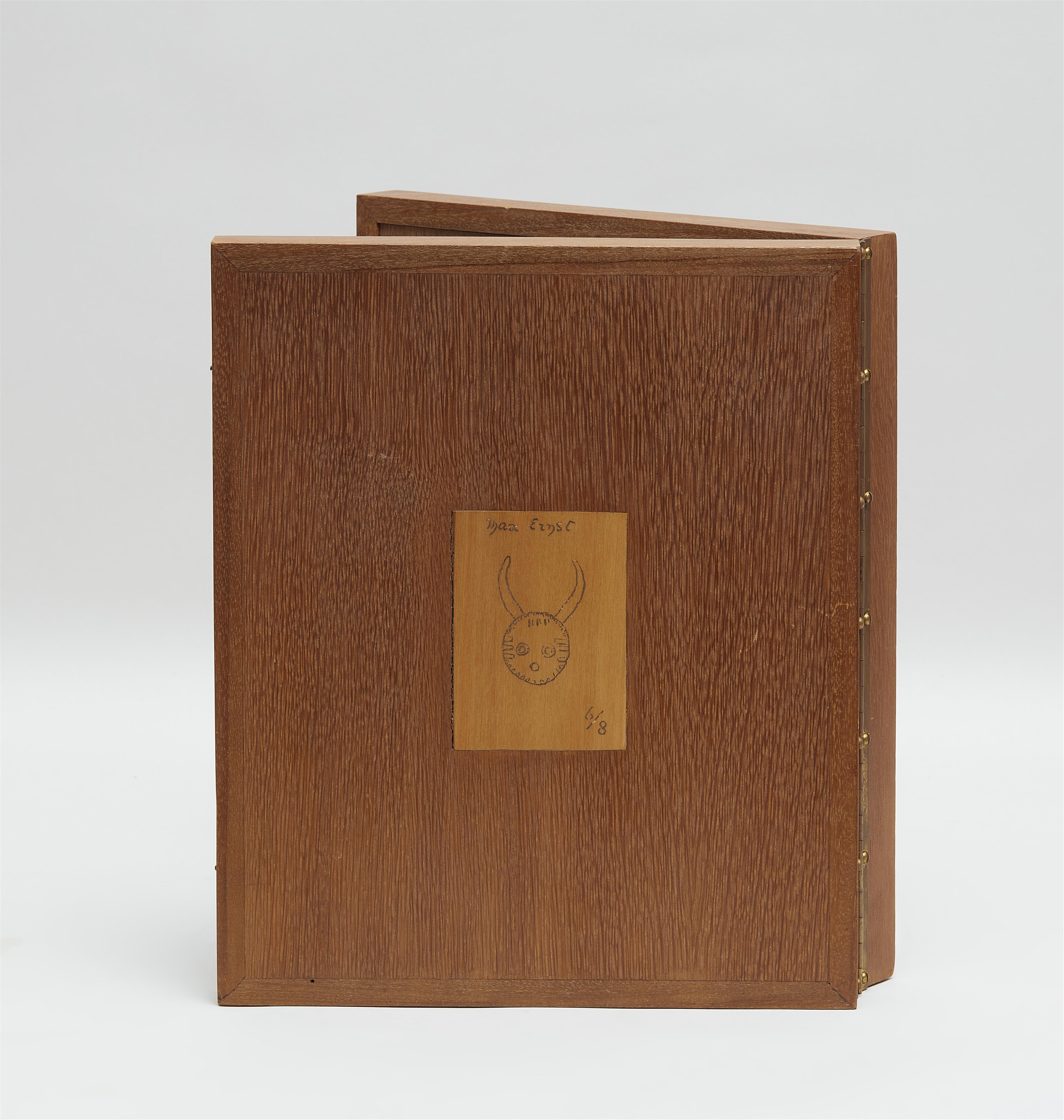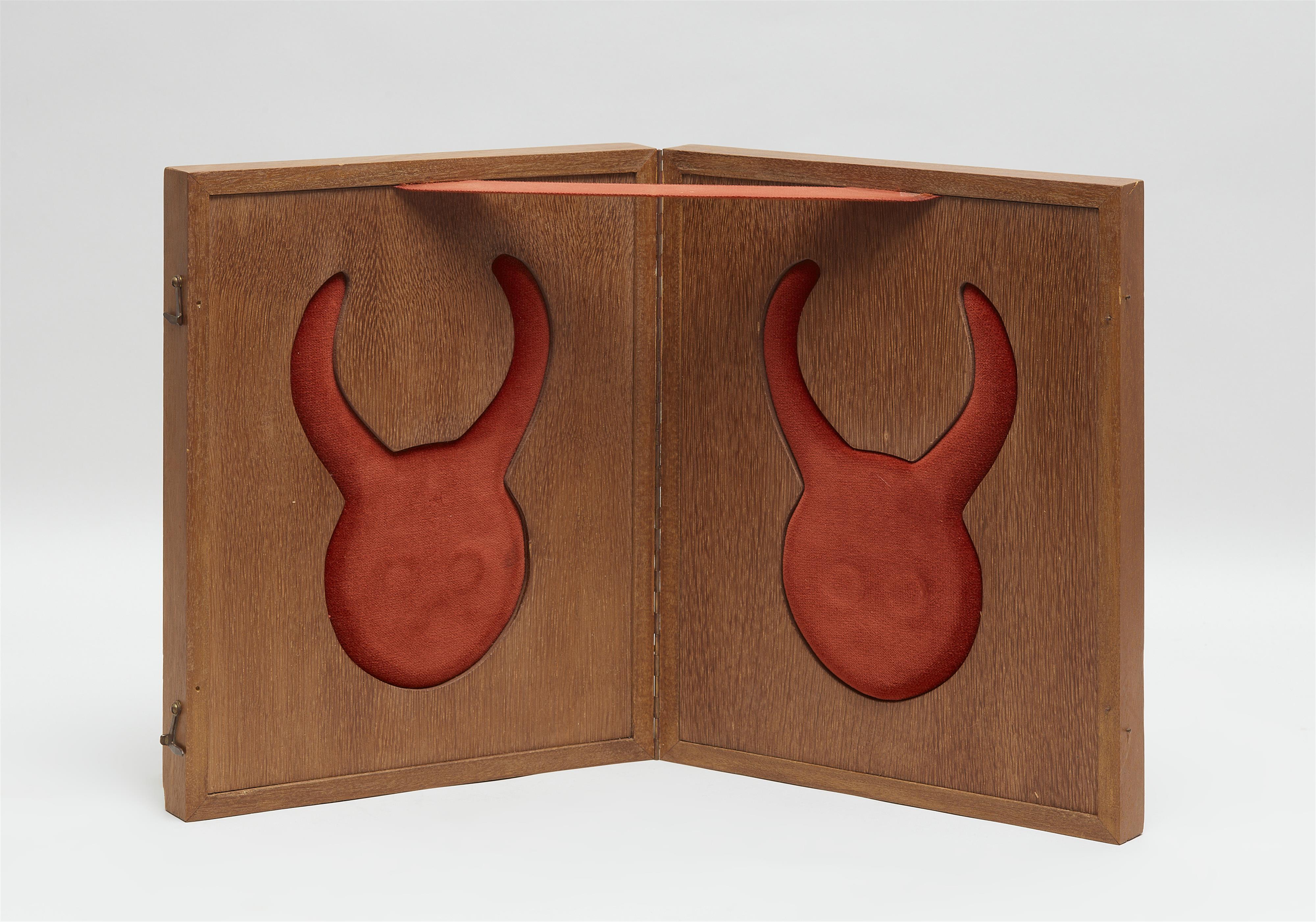Max Ernst
Tête à Cornes
1959
23k gold. Sculptural pendant. In original oak case, velvet-lined, with stamped signature, edition number and object drawing on the lid (29,2 x 24,5 x 5,2 cm). 18.7 x 12.7 cm. Framed. Verso impressed 'max ernst', numbered '6/8', two four-figure reference numbers from Atelier François Hugo and with goldsmith's mark. Numbered 6/8. - In very good condition.
"Tête à Cornes", "Horned Head", is one of the rare pieces of gold or silver jewellery created by Max Ernst from 1957 onwards in congenial collaboration with the Parisian goldsmith François Hugo that rarely appear on the market. On his initiative, Ernst designed small models made of plasticine, a modelling clay for artists, which Hugo transformed into 23-carat gold sculptures. While Hugo transformed some of these plaques into brooches, i.e. wearable pieces of jewellery, he interpreted others in the sense of a relief and mounted them accordingly on contrasting, dark surrounds.
Thematically, "Tête à Cornes" is a small mask. This theme found its way into Ernst's work when he lived with his wife Dorothea Tanning in Sedona, Arizona, from 1946 and studied the cult objects of the Native Americans, such as the Zuni or Hopi Indians. Their formal vocabulary was influential both for his most famous sculpture, the life-size sculpture "Capricorn", and for the decorative reliefs with which Max Ernst furnished his house in Sedona. In this plaque, in which three circles combine to depict a face, Ernst designed a mask, an object that plays an important role in human history in ritual-cultic, carnevalistic or symbolic form. Like the Indian masks it was based on, the work derives its power from the suggestive magic of the large eyes fixed upon the viewer.
Catalogue Raisonné
Spies/Metken 3783, I
Provenance
Private collection, North Rhine-Westphalia
Literature
Claire Siaud/Pierre Hugo, Bijoux d'Artistes, Hommage à François Hugo, Aix-en-Provence 2001, p. 99 with full page col. illus.
Exhibitions
Cf. Paris 1961 (Le Point Cardinal), Max Ernst, Oeuvre Sculpté 1913 - 1961, cf. no. 54 (“Huismes, 1959. 1960”)








